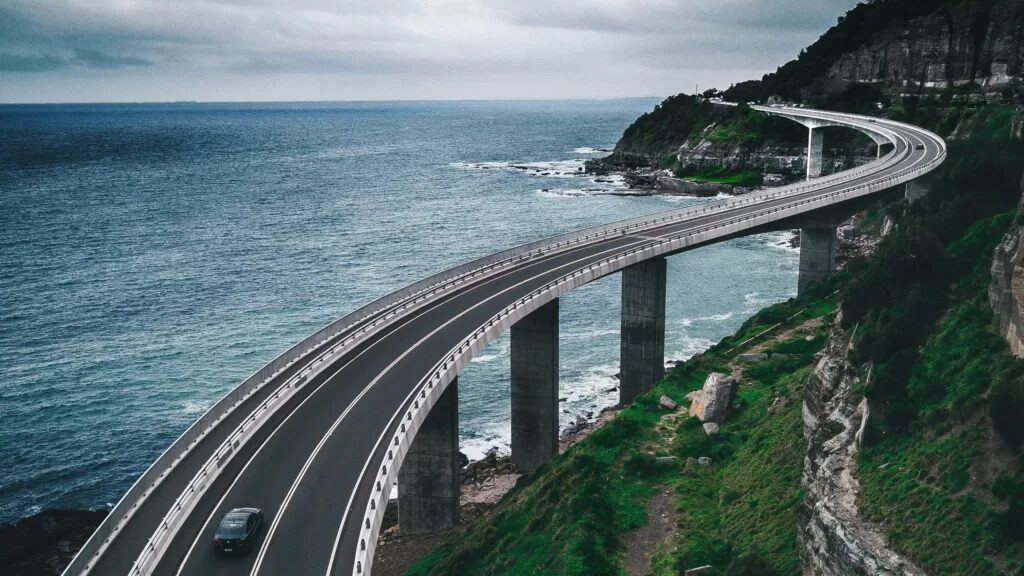What Will E-Transport Look Like In 10 Years?
Nov 22, 2023 | Pratirodh Bureau
In the near future, you may be able to charge your EV while driving it (Unsplash: Silas Baisch Unsplash Licence)
Picture the scene: you’re driving your electric vehicle to the shops and notice the battery is running low.
Not to worry. You park in an available bay, and while you shop for groceries and have a cappuccino, your car is charging. No cable, no worries. The entire process is automated.
Thanks to recent advancements in wireless power transfer research, it has become feasible to charge EVs without the need for a cable, just like the wireless chargers already in use for smartphones.
This is the future of EVs. And it’s not far away.
Far from former Australian Prime Minister Scott Morrison’s fear that EVs could “end the weekend“, Christmas holidays at the beach in the near future could benefit from built-in wireless charging infrastructure on the highways you take to get there.
This will allow you to charge your EV while travelling on the road, known as dynamic wireless charging.
Most EVs today can travel more than 300km on a single charge — further than most people will need for day-to-day use, but not far enough when you’re embarking on a longer journey.
But with dynamic wireless charging technology integrated into highway infrastructure, range anxiety will no longer be something you’ll have to think about.
You also won’t have to buy a more expensive EV with a bigger battery capable of covering hundreds of kilometres — batteries being the most expensive part of an EV — when your average daily travel distance is just a few tens of kilometres.
The extensive list of EV benefits is quite appealing — not least how they can help reduce the world’s transport-related greenhouse gas emissions.
However, there is still a long way to go before we reach that utopia.
Despite their environmentally-appealing facade, EVs produce more carbon emissions during the manufacturing phase than their internal combustion engine counterparts.
This is primarily attributed to the environmentally unfriendly processes of producing the bulky batteries used in EVs.
Before a mid-size EV even hits the road, an analysis estimated it would have produced 8,100kg of CO2. However, this will be offset over the life of the EV, thanks to its carbon-free propellant.
Whether charged via a cable or wirelessly, the environmental impact of EVs also depends on the carbon footprint of their energy source.
If the electricity used to recharge it is sourced only from coal-fired power plants, a mid-size EV like the Tesla 3 would have to be driven 125,000km to surpass the environmental performance of a petrol-fuelled Toyota Corolla.
However, if the grid recharging it is fully powered by renewable sources, this break-even point falls to below 14,000km.
The electricity grid must be capable of accommodating such a tremendous influx of EVs and renewable resources.
EVs are not just like other items you have at home. The charging process of an electric car might take up to 22 kilowatts of power — or 10 times the power consumed when ironing or using your hairdryer at maximum capacity.
Handling such an enormous amount of power at a national grid level, coupled with the unpredictable nature of renewable resources requires a grid that is not only more intelligent but also more sustainable and decentralised than current infrastructure.
The grid first needs to be digitalised to keep up with the complex demands of the growing number of EVs using it and the increasing prevalence of renewable energy resources feeding into it.
What this means is that a future grid is a data-driven, AI-integrated network which enables all the energy entities — from consumers to distributed generators and renewable resources — to interact digitally with each other as well as with the overall main network.
The rise of artificial intelligence, and its related applications, present promising opportunities to manage these highly sophisticated energy grids efficiently.
Another challenge to overcome is improving the batteries that power EVs themselves.
As well as current batteries being expensive, bulky and hard to sustainably produce, they can also be easily damaged.
For example, fast chargers for EVs allow you to recharge quickly but they also inject a massive amount of energy into the battery in a very short time, causing greater depreciation and degradation of the battery.
There is also the problem of what to do when the battery reaches the end of its usefulness in an EV, with work underway to see if they can be repurposed for stationary use at solar or wind farms.
Researchers are developing a process for recycling EV batteries at the end of their life and breaking them down into their component parts which only produces low emissions.
But EV batteries have their upsides too, such as their ability to feed energy back into the grid through bi-directional chargers and vehicle-to-grid technology.
Picture another scene: you’re driving your EV to the shops and the money you’ll make feeding energy back into the grid while you’re shopping will cover the cost of your coffee and a spot of lunch nicely.
(Published under Creative Commons by 360info™. Read the original article here)
